Truganini (c. 1812 – 8 May 1876) was a woman widely considered to be the last full blood Aboriginal Tasmanian (Palawa).
There are a number of other spellings of her name, including Trugernanner, Trugernena, Truganina, Trugannini, Trucanini, Trucaminni, and Trucaninny.
Truganini was born in 1812 on
Bruny Island, south of the Tasmanian capital
Hobart, and separated from the Tasmanian mainland by the D'Entrecasteaux Channel.
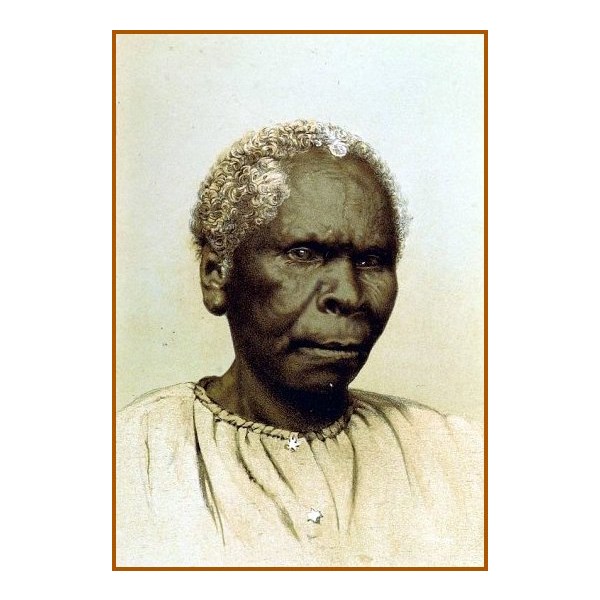
Truganini in 1870
She was a daughter of Mangana, Chief of the
Bruny Island people. Her name was the word her tribe used to describe the
grey saltbush Atriplex cinerea. In 1835 she adopted the name given to her by George Augustus Robinson, 'Lalla(h) Rookh' an Indigenous name meaning 'last survivor of [her] clan'. Truganini grew up with tragedy, her birth mother had been killed by sealers, she was later raped by sealers with her first fiance dying while trying to save her from them, and in 1828, her step mother and
two sisters, Lowhenunhue and Maggerleede, were abducted by convicts and taken to
Kangaroo Island, off South Australia where they were sold as slaves.
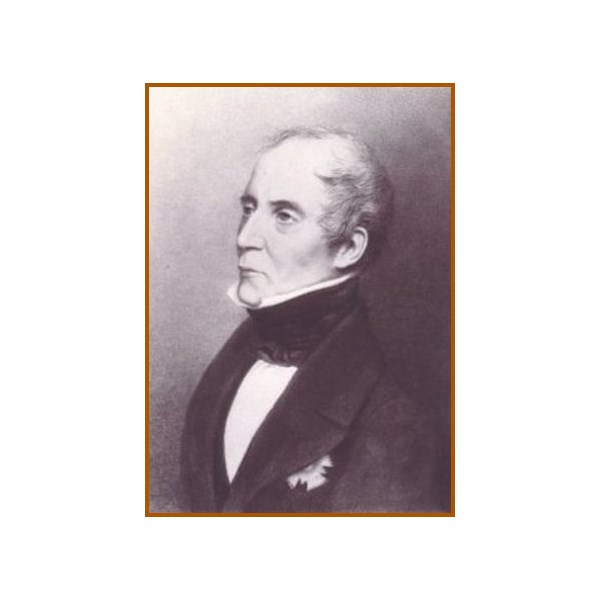
Sir George Arthur
Lieutenant-Governor George Arthur, He was ambitious, religious, severe and thorough. All qualities that made him a perfect governor, though not a
well liked man
When Lieutenant-Governor George Arthur arrived in Van Diemen's Land in 1824, he implemented two policies to deal with the growing conflict between settlers and the Aborigines. First, bounties were awarded for the capture of Aboriginal adults and children, and secondly an effort was made to establish friendly relations with Aborigines in order to lure them into camps. The campaign began on
Bruny Island where there had been fewer hostilities than in other parts of Tasmania.
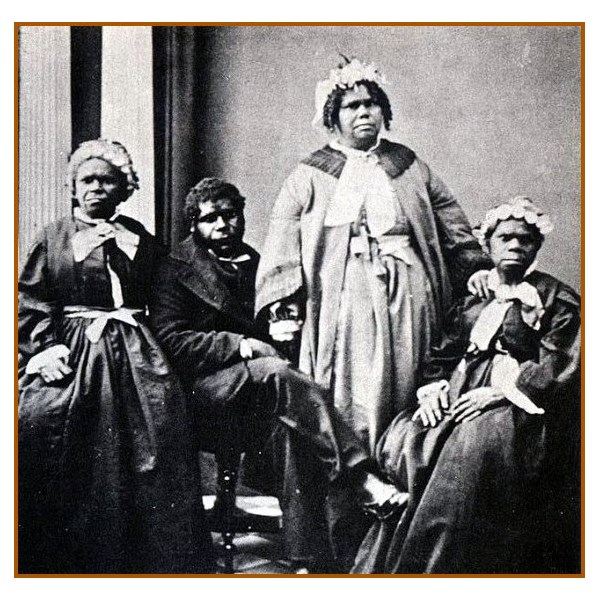
Truganini, seated right
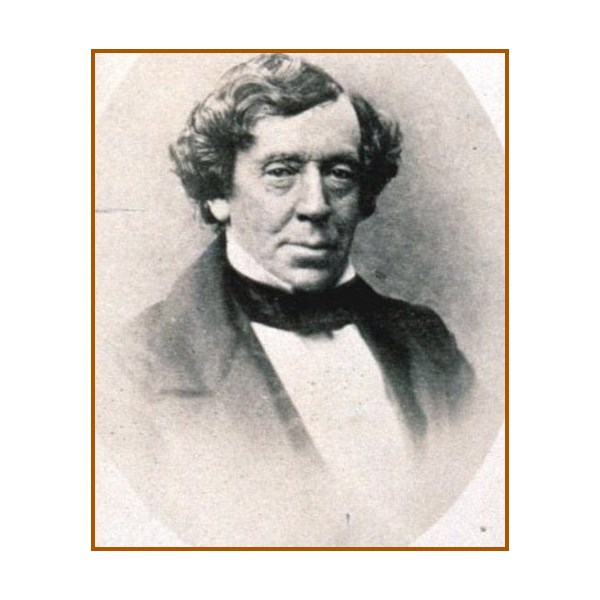
George Augustus Robinson
In 1830, George Augustus Robinson, the Protector of Aborigines, moved Truganini and Woorrady to Flinders Island with the last surviving Tasmanian Aborigines, numbering approximately 100. The stated aim of isolation was to save them but many of the group died from influenza and other diseases. Truganini also helped Robinson with a settlement for mainland Aborigines at Port Phillip in 1838. After about two years of living in and around
Melbourne they became outlaws, stealing from settlers around Dandenong before heading to Bass River and then Cape Paterson where members of their group murdered two whalers at Watsons hut then shot and injured other settlers around the area. A long pursuit followed where those responsible for the murders were captured, sent for trial then hanged in
Melbourne.
A gunshot wound to Truganini's head was treated by Dr. Hugh Anderson of Bass River before she and her party were sent to stand trial in
Melbourne, resulting in her being sent back to Flinders Island. In 1856, the few surviving Tasmanian Aborigines on Flinders Island, including Truganini, were moved to a settlement at Oyster Cove, south of
Hobart
Oral histories of Truganini report that after arriving in the new settlement of
Melbourne and disengaging with Robinson, she had a child named Louisa Esmai with
John Shugnow or Strugnell at
Point Nepean in Victoria. Further, Truganini was from the bloodlines of Victoria's Kulin Nation tribes. Indeed, they hid the child from authorities hunting Truganini. After Truganini was captured and exiled, her daughter Louisa was raised in the Kulin Nation. Louisa married
John Briggs and supervised the orphanage at Coranderrk Aboriginal Reserve when it was managed by Wurundjeri leaders including Simon Wonga and William Barak.
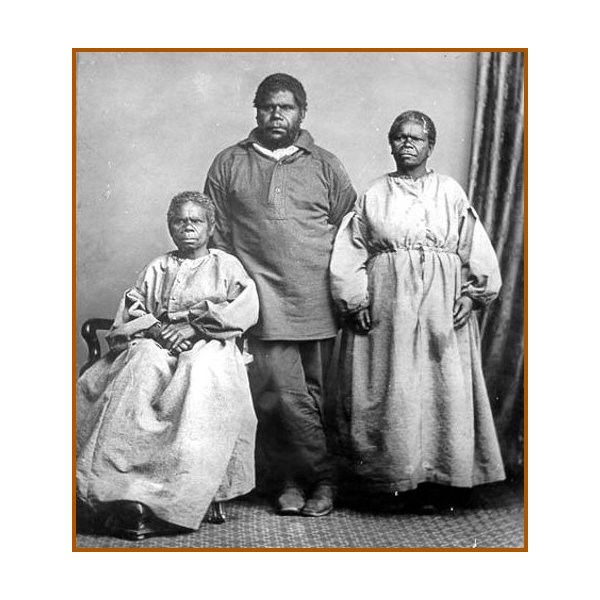
Truganini, William Lanney,(King Billy) and Bessie Clark, the last three tribal people of Tasmania, at Oyster Bay, in 1866.
According to a report in The Times she later married a Tasmanian known as "King Billy" who died in March 1871. By 1873, Truganini was the sole survivor of the Oyster Cove group, and was again moved to
Hobart. She died three years later, having requested that her ashes be scattered in the D'Entrecasteaux Channel; she was, however, buried at the former Female Factory at
Cascades, a suburb of
Hobart. Within two years, her skeleton was exhumed by the Royal Society of Tasmania and later placed on display. Only in April 1976, approaching the centenary of her death, were Truganini's remains finally cremated and scattered according to her wishes .
Truganini is often considered to be the last full-blood speaker of a Tasmanian language. The Companion to Tasmanian History details three full blood Tasmanian Aboriginal women, Sal, Suke and Betty, who lived on
Kangaroo Island in South Australia in the late 1870s and 'all three outlived Truganini.' There were also Tasmanian Aborigines living on Flinders and Lady Barron Islands. Fanny Cochrane Smith (1834–1905), outlived Truganini by 30 years and in 1889 was officially recognised as the last full blooded Tasmanian Aboriginal. Smith recorded songs in her native language, the only audio recordings that exist of an indigenous Tasmanian language.
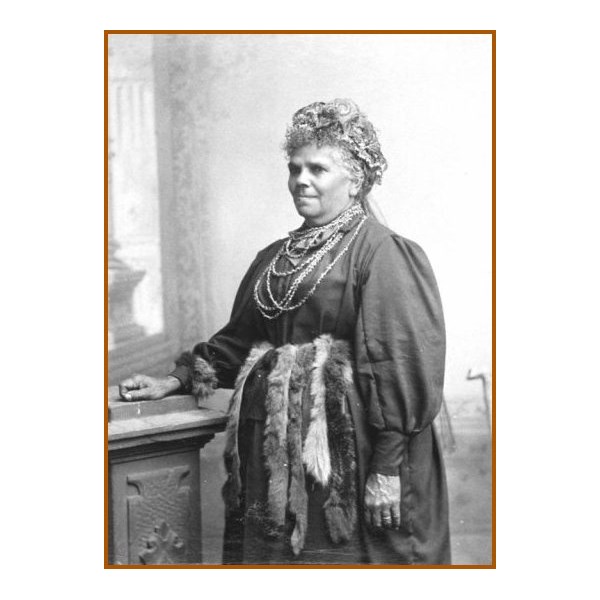
Fanny Cochrane Smith
Fanny Cochrane's mother and father, Tanganutura and Nicermenic, were two of the Tasmanian aborigines settled on Flinders Island in the 1830s by the Rev. George Augustus Robinson, and she was born on the island at Wybalenna. No indigenous name is known; Robinson gave European names to all the indigenous Tasmanians who arrived at the Island as part of his attempt to suppress their culture.
From the age of five to eight she lived in the
home of Robert Clark, the Wybalenna preacher, and was then sent to the orphan school in
Hobart to learn domestic service skills after which she returned to Wybalenna. She served as Clark's servant until the station closed in 1847. In 1847 her parents, along with the survivors of Wybalenna were removed to Oyster Cove.
In 1997 the Royal Albert Memorial Museum, Exeter, England, returned Truganini's necklace and bracelet to Tasmania. In 2002, some of her hair and skin were found in the collection of the Royal College of Surgeons of England and returned to Tasmania for burial.
The only known recording of Tasmanian Aboriginal song and music. Fanny Cochrane Smith made this recording with Dr Horace
Watson in 1899. The wax cylinder recordings of Tasmanian Aborigine, Fanny Cochrane Smith, are some of the earliest recordings ever made in Australia, and the only sound recording of the traditional Tasmanian Aboriginal language - preserving this language for time immemorial.
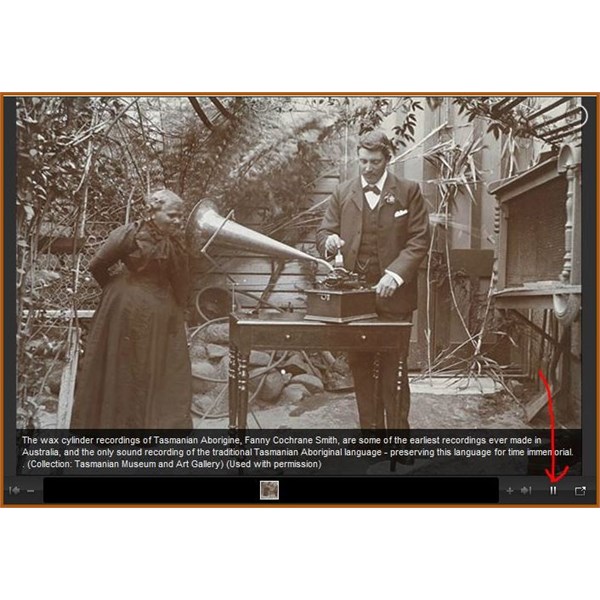
Fanny Cochrane Smith Recording
When you open the link you will find this photo , click the button arrowed to listen to the short story about Fanny Cochrane Smith.
Fanny Cochrane Smith recordings: 1899 and 1903
LINKYouTube LINK
.